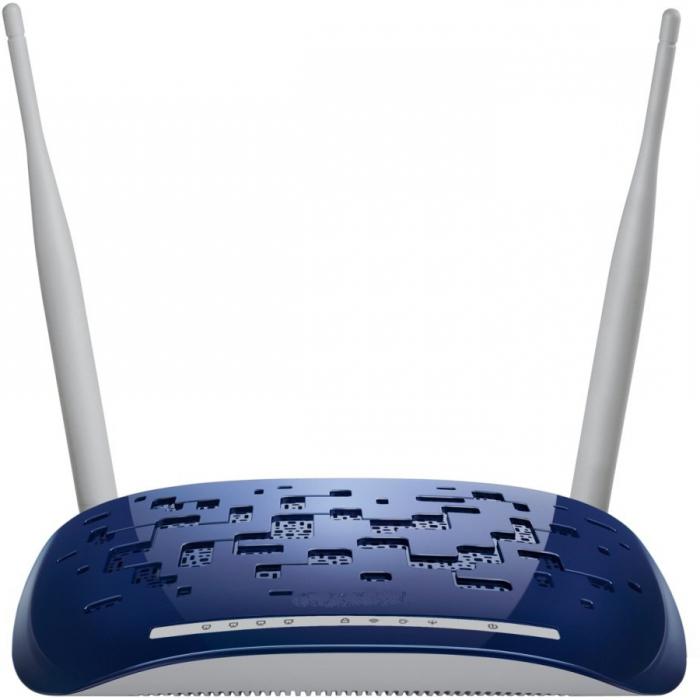To create your own wireless Wi-Fi network, it is enough to connect a special device - a router - to an existing stationary or laptop computer and make a number of settings. Prices for the simplest budget models on average start from 1 thousand rubles, but for a more technically advanced solution you will have to pay over 7 thousand. Laptop owners can be pleased: connecting a laptop through a router is so simple that it can be done on its own - no special knowledge is required for networking. Perhaps the most difficult thing to face is a trip to the store for the device. Well, so that even the most “green” beginners do not have any questions, we will consider two key points: how to connect a laptop to a router and configure it to distribute the Internet to everyone.
Do I need a router for a laptop
A person who is not familiar with wireless networks, when viewing such articles, there may be a logical question about how expedient it is to purchase a router for a laptop computer, which is already remarkably connected to Wi-Fi. Indeed, only a limited number of users are interested in the answer to the question “how to install a router on a laptop?”, While the rest are satisfied with the capabilities of the built-in Wi-Fi module. The thing is that the wireless network adapter that is built into laptop computers has only basic capabilities, and also cannot remain on if the laptop is de-energized. Thus, it cannot be considered as a reliable access point.
How to avoid unnecessary expenses
Nevertheless, it is worth recognizing that for the solution of some problems a very specific router for a laptop can be used - a program. With its help, you can "make" the internal adapter to work for distribution. There are quite a few such applications. Some come completely free, for other developers want a certain reward. Consider a very good solution - MyPublicWiFi. The utility should be launched with administrator rights (the right mouse button - starting from the admin). The main window is represented by settings. Here you need to register the SSID (the very name that will be broadcast), come up with a password for access and select an existing Internet connection for distribution. In the Management section there is an item that allows the program to start automatically when the operating system starts. Of course, before using such solutions, drivers must be installed on the Wi-Fi module in the laptop and some kind of third-party Internet connection (for example, via a modem).
How to enable a hardware router
When you purchase a separate device, the question arises, "how to connect a laptop to a router?". There are two ways to do this: via cable or, again, via Wi-Fi. In the first case, the user receives full access speed, and not limited by the capabilities of wireless modules, but loses mobility, since the computer is physically connected to the router. On the back of any router there are several sockets for connecting Ethernet wires. One of them is highlighted and indicated by WAN. Here you need to connect the plug of the cable coming from the Internet provider or an intermediate conversion device. Connect an Ethernet cable to any other one, the other end of which must be inserted into the appropriate connector on the computer. After that, it remains to start the laptop, connect the power supply to the router and press the power button. Usually this is enough for the Internet to begin to be heard, although, of course, there are exceptions.
How to configure a router for a laptop
After that, it is recommended to make device settings to secure the network. To do this, you need to launch any browser (the ideal option is Internet Explorer, as the most compatible) and type in the address 192.168.0.1. Depending on the model and manufacturer, the value may vary, so it should be clarified in the instructions. When asked about the password and login, type the word “admin”. In the window that opens, you can use the "Quick Settings" function, which is recommended for beginners, or go to the "Wireless Mode" and manually specify the desired parameters. In particular, the user is required to come up with an SSID, and in the "Protection" section, specify the encoding method and key code.
Symbiosis of programs and devices
All of the above gives an answer to the question "how to connect a laptop physically to a router?". But what if the task is reversed and you want to connect the laptop to a Wi-Fi network distributed by a third-party router? In this case, the procedure is different. All connection recommendations will be ineffective if the appropriate drivers are not installed in the operating system. A laptop consists of many components, each of which implements a function. In order for the operating system to interact with the hardware, it is necessary to install control programs - drivers. For the main components, they are included in the system, but for the Wi-Fi module, in particular, they must be installed separately. The driver is located on the disk that always comes with the laptop. Also, this program can be downloaded from the website of the computer manufacturer. This step is required and without it you will not be able to configure the network. Actually, even a laptop router - a program - will refuse to work without completing this item. Suppose the driver on the Wi-Fi module is installed.

Embedded Tools
How to connect a laptop to a router the easiest way? The answer is obvious: using the capabilities offered by the operating system itself. The latest versions of Windows in this regard are particularly “user friendly”. The router can broadcast the network in two modes: with free and password-protected access. In the first case, the owner of the laptop is required to click on the image of the signal strength indicator with a sun located in the corner of the desktop next to the clock. A list of detected networks is displayed. Those that require a password will be indicated by a shield symbol. By clicking on the open, you will need to give the command "Connection" and that’s all - you can work with the Internet. However, most Wi-Fi networks are now encrypted. To connect to these, you need to enter the code (security key) in the displayed window. If you do not know him, then by regular means it is impossible to join. Actually, if the laptop does not connect to the router, then the first thing to do is to verify that the password is entered correctly. Often the cause of the error can be a Punto Switcher layout switch that fires at the most inopportune moment.

Signal strength
One of the features of Wi-Fi networks is that even if the laptop module “saw” the SSID of the access point, this does not mean that you can work with it. Signal strength is important. The parameters of the transmit-receive units in the devices are different, so a situation may arise in which the Wi-Fi receiver installed in the laptop “sees” the network, however, the power of its transmitter is not enough to transmit a confirmation request to the router without errors. Thus, before you panic and look for the reason why the laptop does not see the router, it is worth trying to reduce the distance between the devices. In standard Windows tools, signal strength can be estimated by the number of green bars on the indicator of the corresponding Wi-Fi network.
Router Errors
Quite often, users have the question “why the laptop does not see the router, although yesterday everything worked?”. Surprisingly, the “cure” for such a problem is a banal reboot of the router. It needs to be de-energized for a couple of minutes and turned on again. Re-initialization of its programs and modules will occur, which in 90% of cases leads to the restoration of performance. The disadvantage of this method is obvious - the router should be within reach.
Router configuration
Sometimes a situation arises in which phones, netbooks and other devices “see” the network and join it, but the laptop does not register the SSID. In this case, changing the working channel in the router helps. In the wireless settings, you need to select another Chanel number, abandoning the "Auto" mode.
Universal way to connect
In rare cases, it is possible to solve problems with connecting to Wi-Fi on the client side (laptop). There must be physical access to the router. We recommend that you use the QSS function (if supported) for an initial connection. It is enough to press the corresponding button on the laptop, and then within 1-2 minutes - the same on the router.